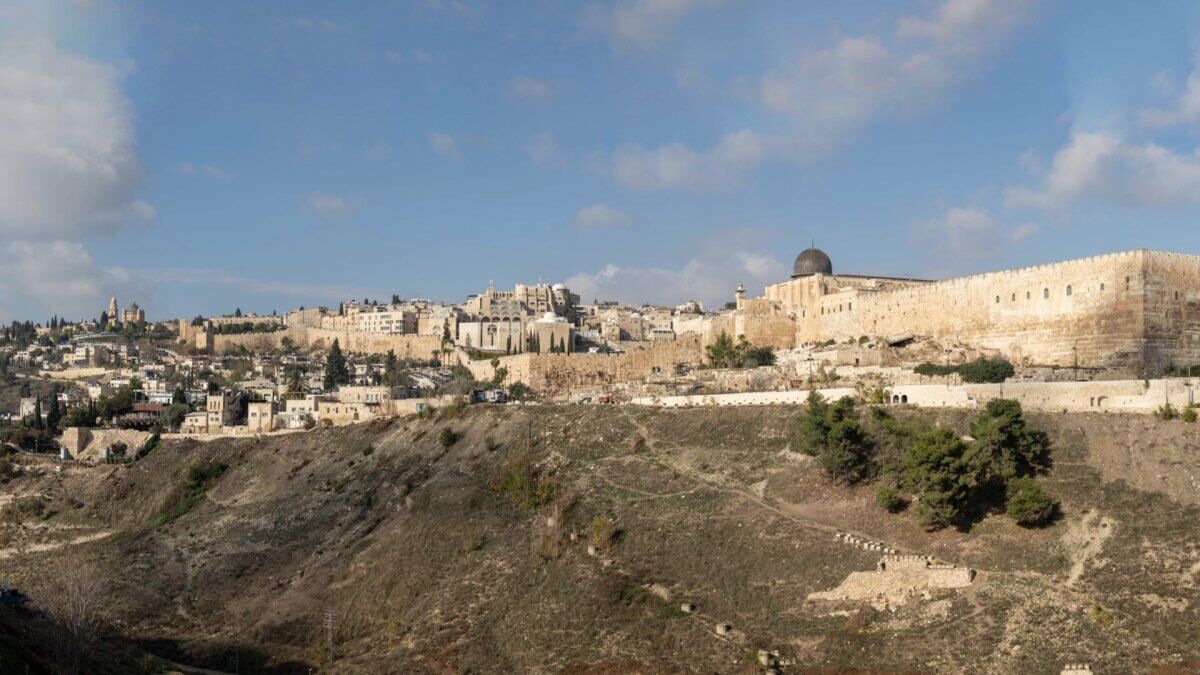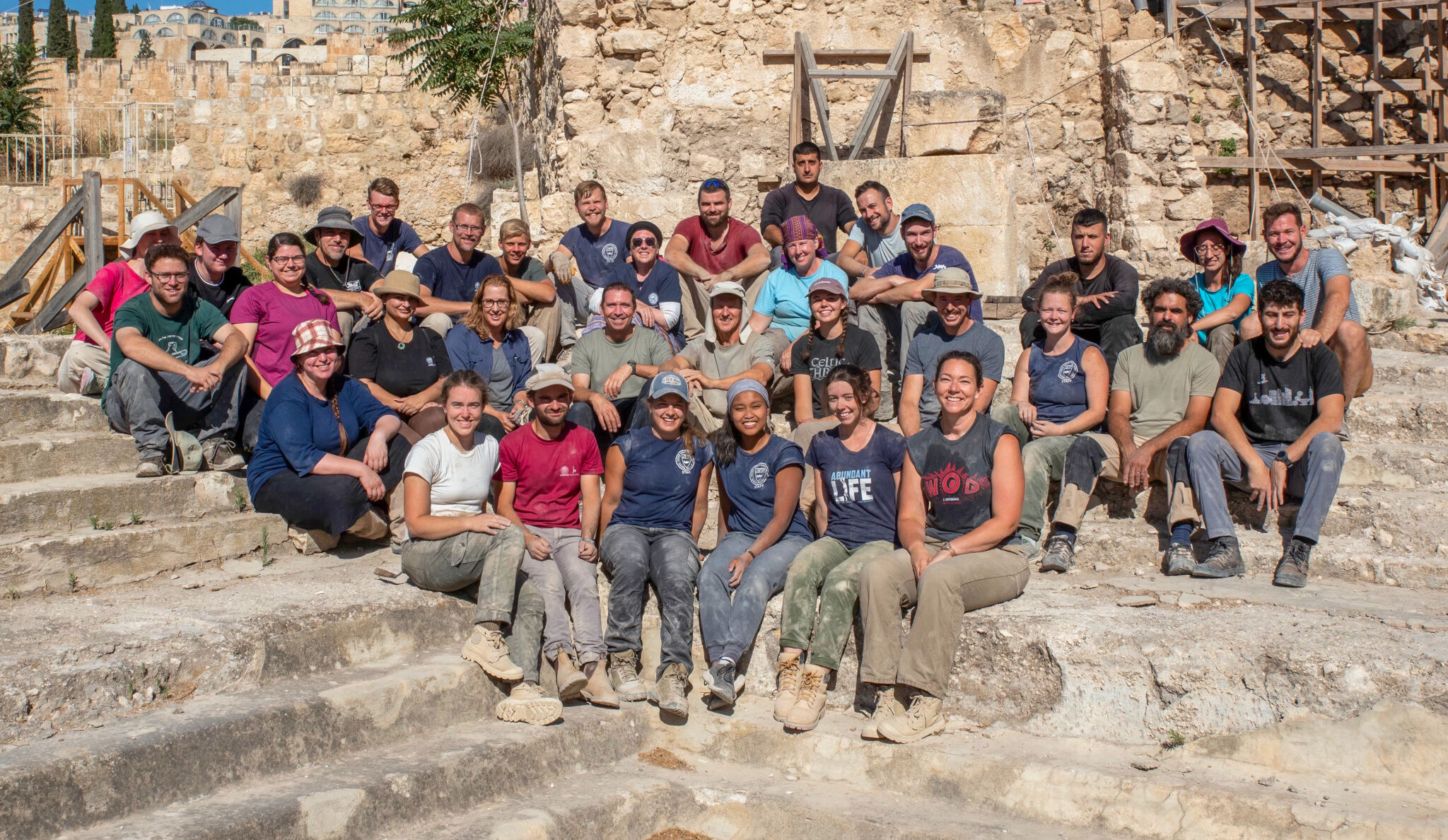On August 3, we concluded the sixth phase of the Ophel excavation in Jerusalem. We first began excavations in this area in 2009, working alongside the late Hebrew University archaeologist Dr. Eilat Mazar.
Like the digs prior, this excavation was carried out in partnership between our institute (the Armstrong Institute of Biblical Archaeology) and the Hebrew University of Jerusalem’s Institute of Archaeology. This excavation was led by Hebrew University archaeologists Prof. Uzi Leibner and Dr. Orit Peleg-Barkat, both of whom are not only outstanding archaeologists but excellent leaders and natural-born teachers.
This summer’s excavation was one of our largest since the 1970s, when Eilat’s grandfather, Prof. Benjamin Mazar, excavated in partnership with our namesake Herbert W. Armstrong and his Ambassador College students. This year, we were joined for part of the season by students from Hebrew University of Jerusalem and New York’s Yeshiva University. It was a pleasure working with both schools, and we would be pleased to work with them on future excavations.
In addition to these universities, we were joined by enthusiastic volunteers from around the world. Our Ophel excavation team consisted of individuals from Israel, the United States, Canada, Australia, the Netherlands and New Zealand. We were also joined by a fantastic team of Palestinian workers from Hebron.
In a nation and city often marked by tension and divided by race and religion, the Ophel dig was a sanctuary of unity and peace. It was wonderful to see individuals from around the world—Jews, Christians, Muslims and others—work together in the spirit of cooperation to unveil ancient history that is important to us all.
We are extremely excited about the developments underway at the Ophel. This area received a lot of attention in the 1970s but has since been somewhat overlooked and forgotten. Perhaps this is understandable, considering the remarkable and important developments occurring in the nearby City of David and just up the hill in and around the Western Wall Plaza. But this is changing, and the number of people who recognize the importance of this eastern Ophel area is growing.
We have been talking a lot with Hebrew University and the Israel Antiquities Authority about the Ophel and how the area can be made more accessible to locals and tourists alike. If you can, I encourage you to visit Jerusalem, particularly the City of David and the Ophel. There is no other place on Earth like it. If you come, be sure to request a tour from one of our institute representatives. (You can book a tour by clicking here.)
The location of the Ophel dig is stunning. It is situated adjacent and south of the Temple Mount, just a couple hundred yards east of the Western Wall along the Ophel Road, with fabulous views of the Mount of Olives, the Kidron Valley and the City of David. These views alone drive home the reality that you are standing in the heart of ancient Jerusalem.

The Ophel was originally acquired (and perhaps partially developed) by King David (2 Samuel 24:18-25). When Solomon became king in the 10th century b.c.e., he commenced a massive northward expansion of the City of David. On the Ophel, King Solomon constructed his impressive palace (which the Bible relates took 13 years to build), a massive royal armory (see 1 Kings 7), a series of fortification walls and gatehouses and, most notably, the adjacent temple and its associated structures. The Bible says that subsequent kings of Judah (particularly Uzziah, followed by his son Jotham) added to Solomon’s royal Ophel complex (2 Chronicles 26:9; 27:1-6).
The Ophel was the seat of Israel’s (then Judah’s, following the separation of the united monarchy) government and religion for roughly 400 years, from the middle of the 10th century b.c.e. to Jerusalem’s destruction in 586 b.c.e. The area remained the nucleus of Jewish politics and religion throughout the Second Temple Period all the way up until Jerusalem’s 70 c.e. destruction. And some 1,900 years later, in 1949, it became the capital of the Jewish nation once again.
Most of our archaeological work on the Ophel with Dr. Eilat Mazar focused primarily on revealing the First Temple Period. However, before you can excavate First Temple Period material, you have to excavate later periods that typically cover and obscure the earlier, lower layers. This was the case with our 2018, 2022 and 2023 digs, where we excavated Islamic- and Byzantine-period remains before reaching earlier, Second Temple Period, Herodian and Hasmonean material.
Last year, we further exposed the monumental Herodian structure first discovered in the area in 2013. Along the way, we uncovered some amazing artifacts, including remains of the 70 c.e. destruction, hundreds of coins, various small finds and impressive drainage channels relating to a complex purification bath (mikveh) system.
The goal this summer was to continue to reveal this monumental Second Temple Period structure and related material. This dig was significantly larger than the last, both in terms of size and number of people involved. Much of the effort this summer involved the removal of Byzantine structures built on top of the Second Temple Period building (Area D).

In addition to this, Armstrong Institute staff member Christopher Eames led a small team in continuing the excavation of subterranean drainage tunnels that are connected to the mikvehs and the Second Temple Period structure (Area D1). Further, we opened two new areas of excavation (Areas E and F), which provided more finds from the Second Temple Period—namely, the Herodian, Hasmonean and Hellenistic periods—and even some First Temple Period remains.
In the pages that follow, we give a short tour of the site with an overview of some of the artifacts discovered this season. To learn more about the 2023 excavation, click here. This year, for the first time, we blogged the excavation on our website, posting photos and videos. This blog was extremely well received, and we hope to do it with all our future excavations. We are grateful to Professor Leibner and Dr. Peleg-Barkat for opening up the site to the public like this.
Finally, I want to tell you about another exciting upcoming project. At the end of December, the Armstrong Institute of Biblical Archaeology will be opening our third major archaeological exhibit in Armstrong Auditorium, at our headquarters location in Edmond, Oklahoma. In 2012, we created the “Seals of Jeremiah’s Captors Discovered” exhibit, which featured the bullae of the princes Jehucal and Gedaliah (which we found in the 2005–2008 City of David excavations), individuals responsible for persecuting the Prophet Jeremiah (Jeremiah 38:1). In 2018, we created the “Seals of Isaiah and King Hezekiah Discovered” exhibit. This world-premiere exhibit featured the seals of King Hezekiah and Isaiah (which we found on the 2009–2010 Ophel excavation).
This next exhibit will showcase the history of Israel during the reigns of kings David and Solomon. Like the previous two exhibits, we plan to feature some truly extraordinary artifacts from the 10th century b.c.e., particularly from Dr. Eilat Mazar’s City of David and Ophel excavations, as well as from Prof. Yosef Garfinkel’s Khirbet Qeiyafa excavations. We are very excited about this exhibit and believe it might be the most important one yet.
Unfortunately, the history and archaeology related to these archaeological sites, and to David and Solomon, is too often filled with excessive cynicism and controversy. Many of these artifacts, however, speak to the biblical account of the power and strength of Jerusalem and Judah during the 10th-century b.c.e. reigns of David and Solomon.
The exhibit will open at the end of December and will likely run through October. We are still finalizing the details, but we hope to open the exhibit with a special concert and presentation. Just like this magazine, admission to the exhibit will be free of charge. We will provide further details in the next issue and here on our website, ArmstrongInstitute.org. If you have further questions, please e-mail letters@ArmstrongInstitute.org.
Even now, we are making plans for the next excavation season on the Ophel during the summer of 2024. And we are in talks to conduct a further Iron Age/First Temple Period excavation in another, adjacent southern part of the Ophel in the near future.
Great developments are happening in the world of biblical archaeology, and we feel privileged to be able to participate, operating from the city at the center of it all—Jerusalem.

